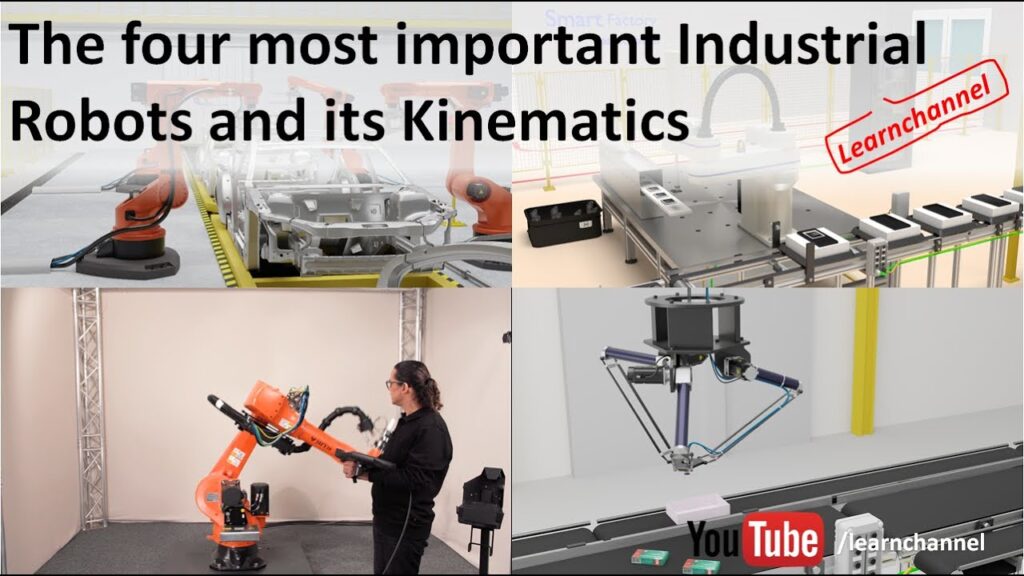Industrial robots have revolutionized the manufacturing industry, enabling increased efficiency and productivity. In this video, we will explore the four most commonly used industrial robots, their kinematics, and applications. Let’s dive into the world of industrial automation and discover the incredible capabilities of these machines.
1. Cartesian Robots
One of the most popular types of industrial robots is the Cartesian robot, also known as a gantry robot. This robot consists of three intersecting linear joints that operate along the X, Y, and Z axes. The Cartesian robot’s kinematic system allows for precise and controlled movements in a three-dimensional workspace. With their high payload capacity and long reach, these robots are ideal for tasks such as material handling, assembly, and packaging in industries like automotive and electronics.
2. SCARA Robots
Next on our list is the SCARA (Selective Compliance Assembly Robot Arm) robot, which features a horizontal jointed arm structure. The SCARA robot’s kinematics enable it to move in a two-dimensional plane, combining rotational and translational movements. This unique design makes SCARA robots perfect for applications that require fast and precise vertical assembly, such as pick and place operations, soldering, and screw driving in the electronics industry.
3. Articulated Robots
Articulated robots are renowned for their flexibility and versatility. These robots consist of multiple interconnected rotary joints, mimicking the structure of a human arm. The articulation of these joints allows the robot to achieve a wide range of motions with excellent dexterity. Due to their ability to handle complex tasks, such as welding, material handling, and painting, articulated robots are widely used in numerous industries, including automotive, aerospace, and food production.
4. Delta Robots
Last but not least, we have the Delta robot, characterized by its unique parallel arm design. This robot comprises multiple arms connected to a central platform, allowing for high-speed and precise movements. Delta robots excel in applications that require rapid and accurate picking, placing, and sorting, such as packaging, pharmaceuticals, and food processing. With their incredible speed and precision, Delta robots significantly enhance production lines’ efficiency, enabling higher throughput and reducing cycle times.
Each of these industrial robot types possesses distinct kinematic characteristics that suit specific manufacturing needs. Their applications range from simple pick and place operations to complex assembly tasks, making them indispensable in modern automation. Industrial robots have transformed the manufacturing landscape, improving product quality, optimizing production processes, and enhancing workplace safety.
In conclusion, industrial robots have become an integral part of automation, revolutionizing the manufacturing industry. The four commonly used types of industrial robots – Cartesian, SCARA, articulated, and Delta – each offer unique kinematic systems that enable precise and controlled movements. The applications of these robots span a wide range of industries, from automotive to electronics and food processing. With their unparalleled efficiency and versatility, industrial robots continue to shape the future of manufacturing, paving the way for advancements in productivity and quality. So next time you see a robot on the assembly line, remember the incredible technology behind it and the role it plays in the world of industrial automation.
Industrial Robot
“Exploring the Efficiency of Industrial Robots in Automation: Understanding Their Kinematics and Various Types”


